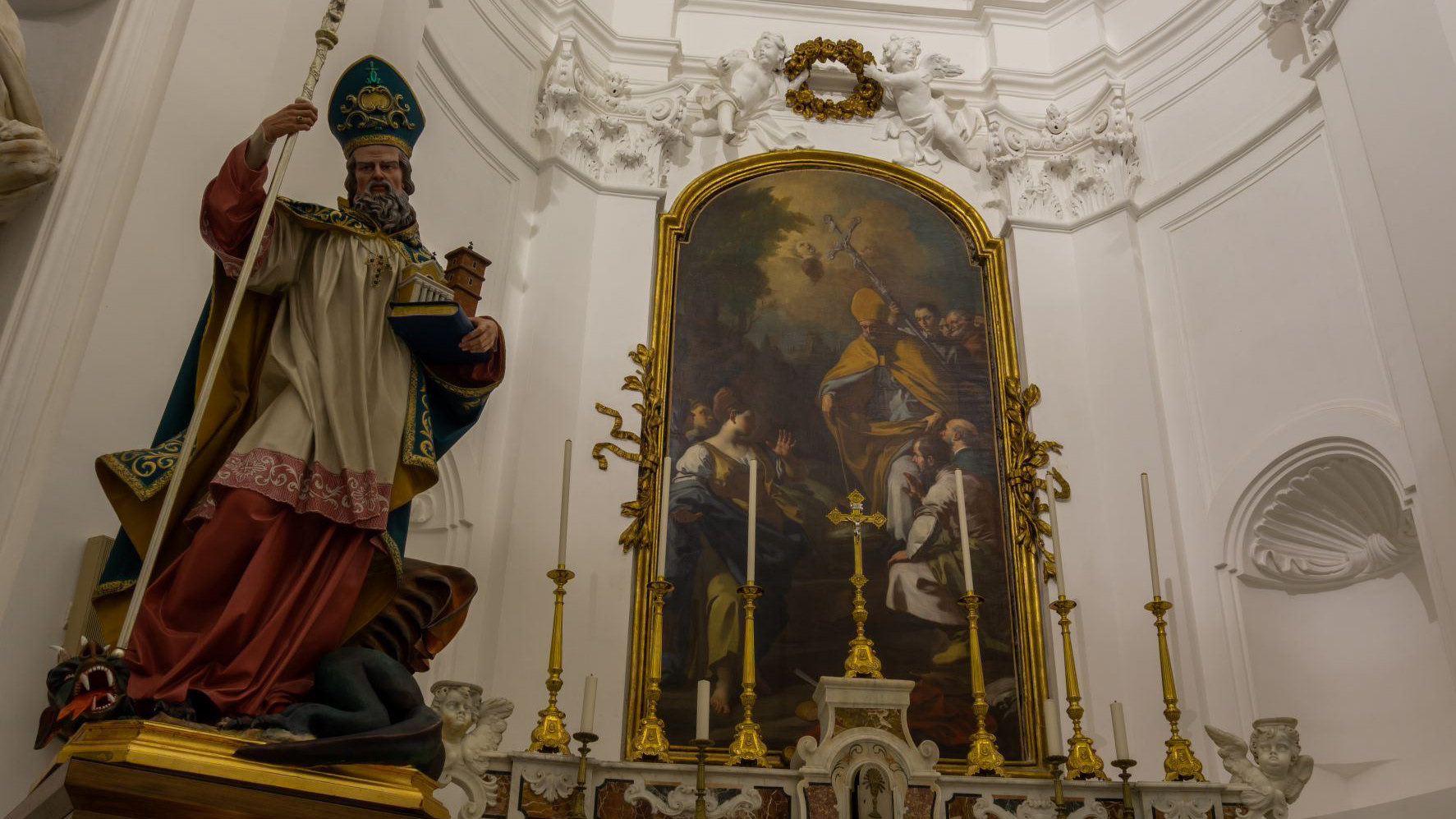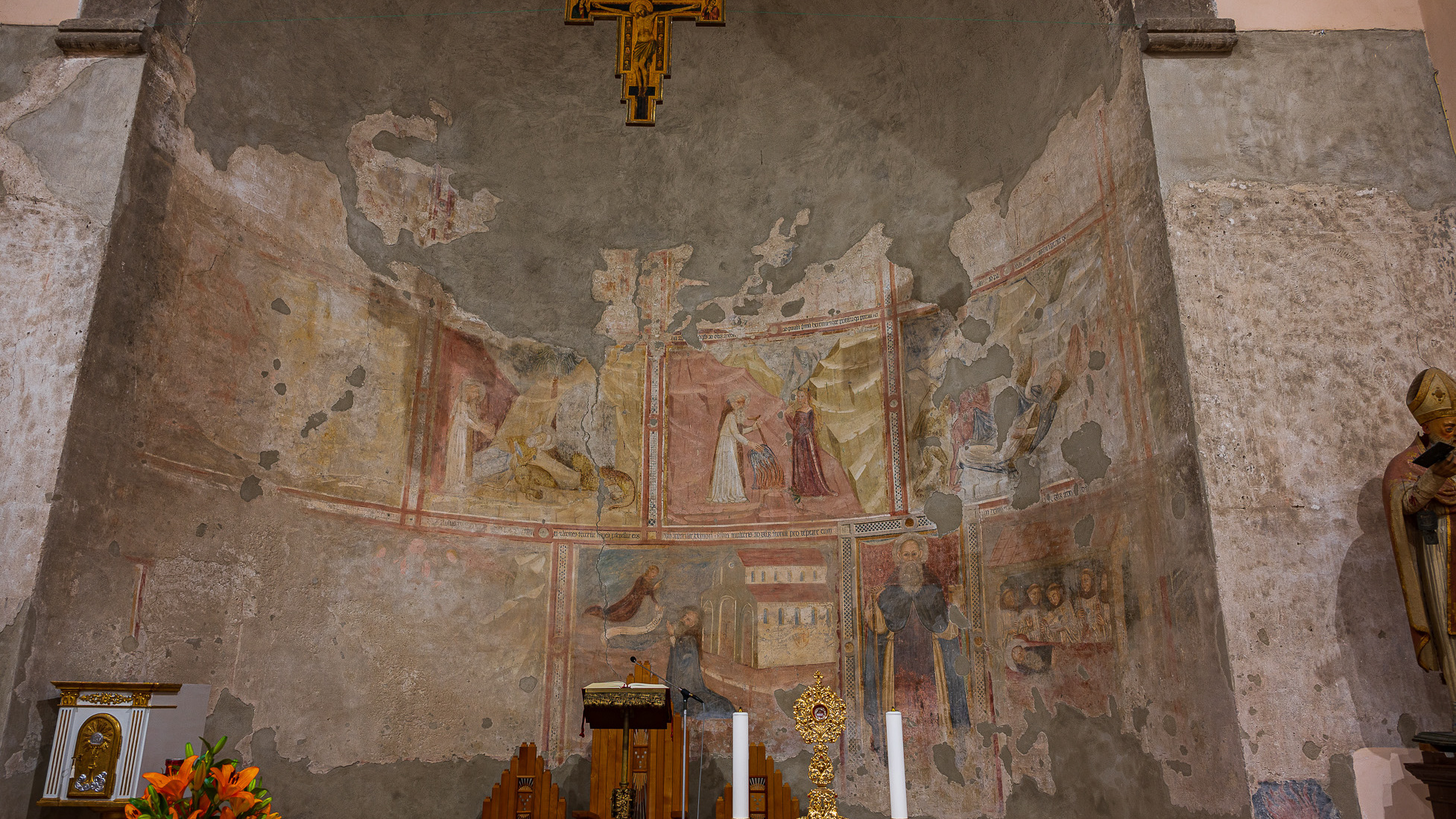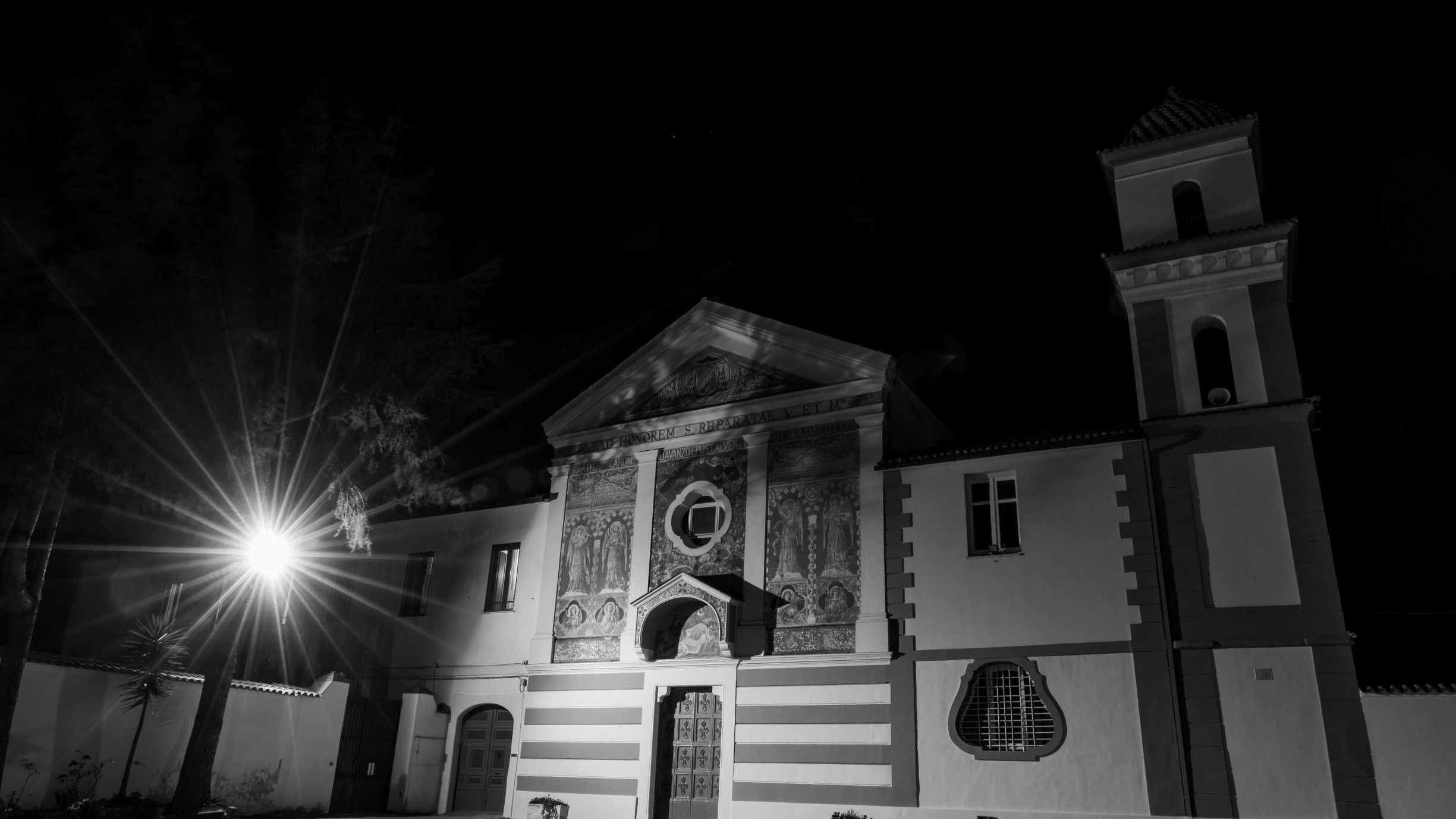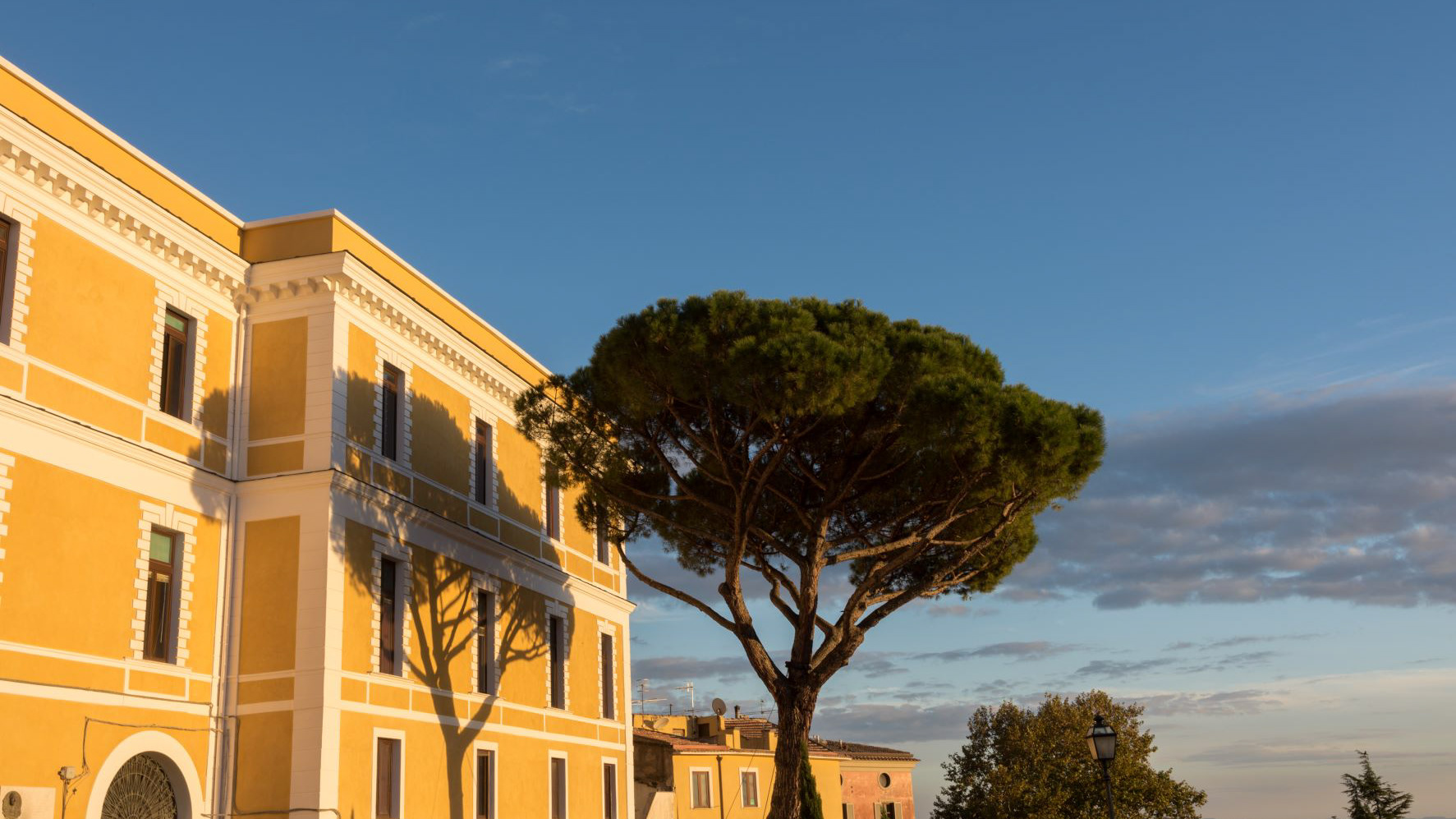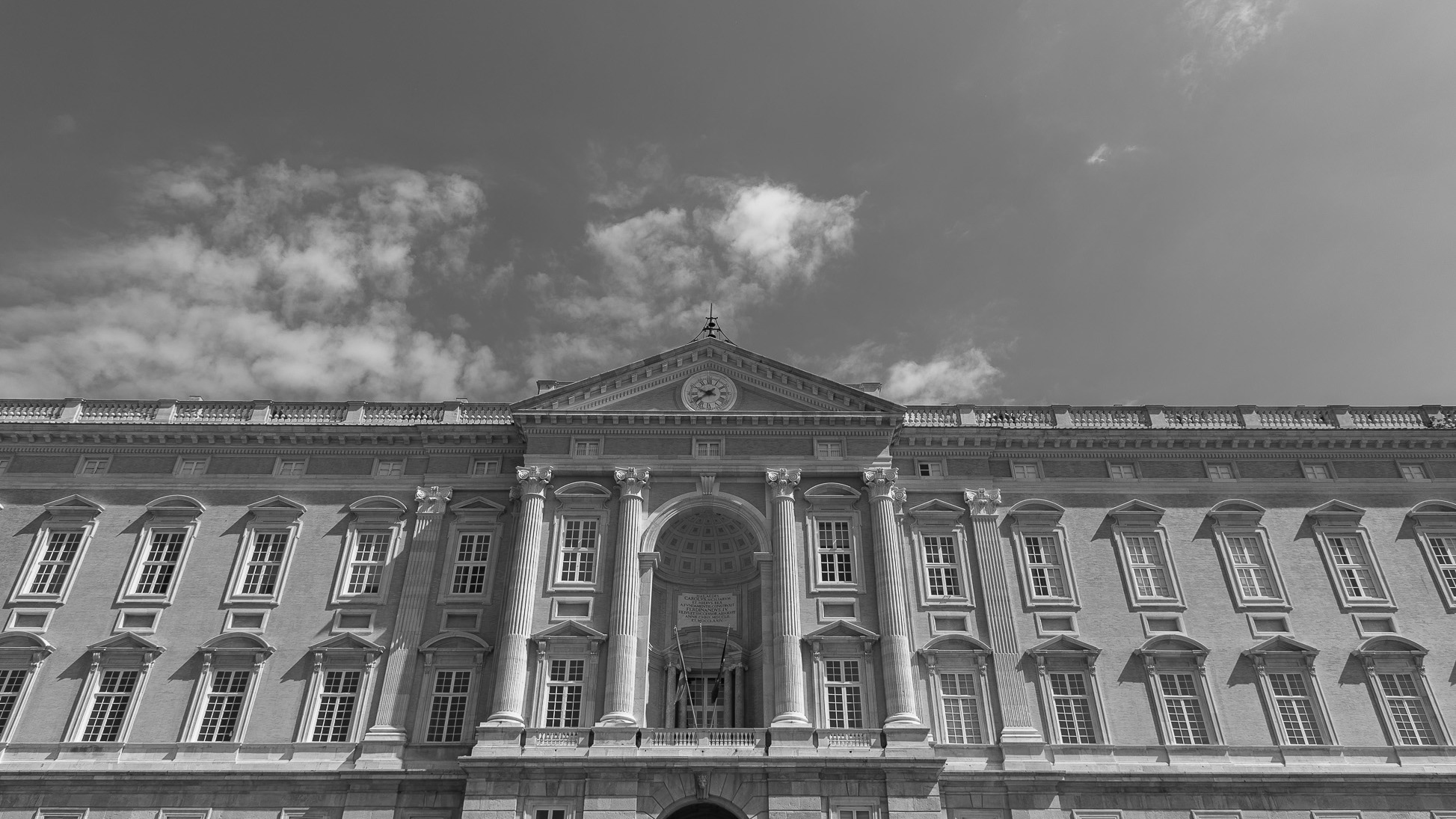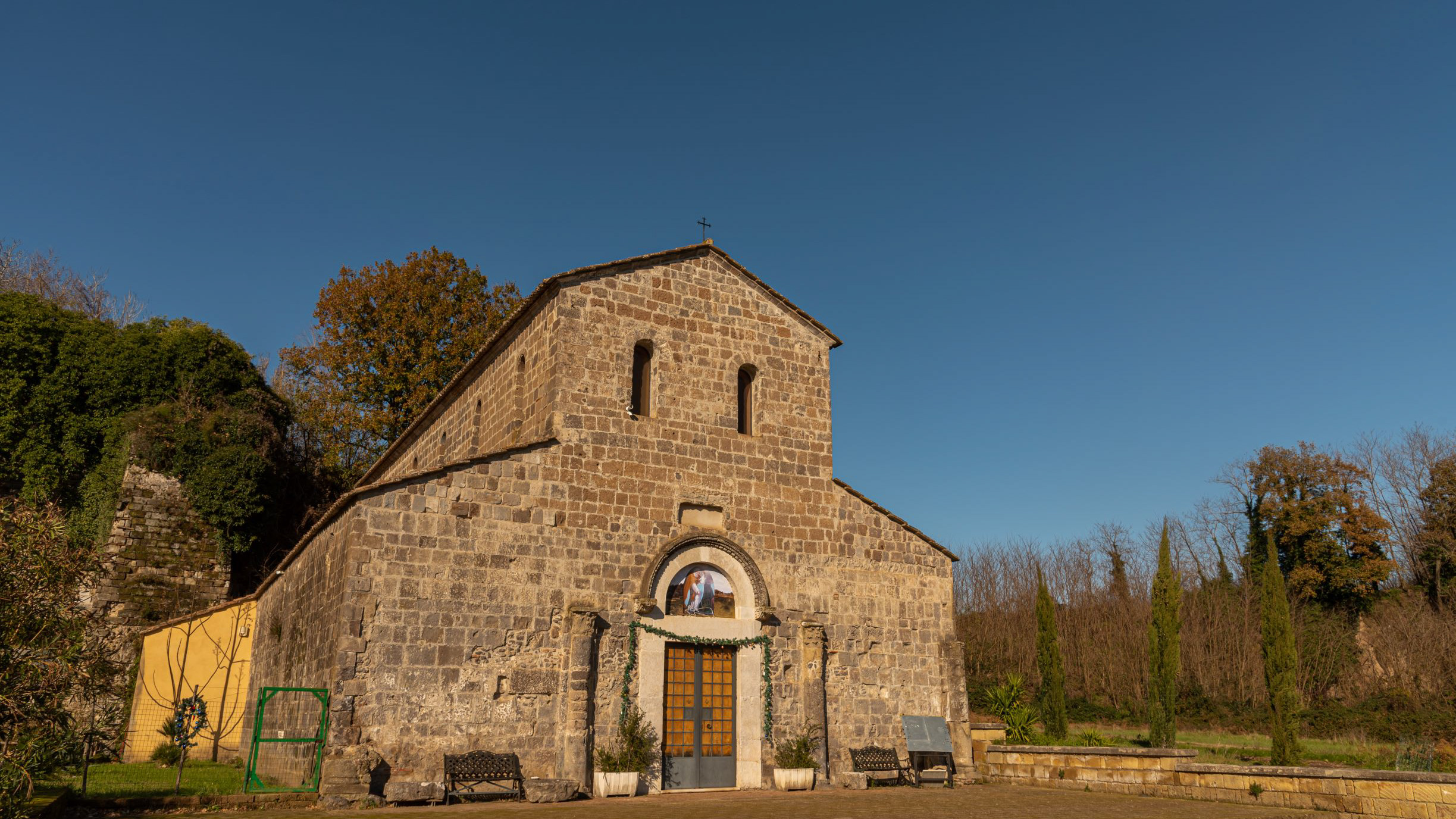Teano. Church of San Paride ad Fontem
The building of S. Paride is a church with a basilica structure with three naves, and termination with a semicircular apse. The facade, where it is possible to admire the building technique in tuff blocks arranged in regular rows, is characterized by the presence of two semi-columns in tuff on the sides of the portal, and a third in the right corner. The half-columns each rest on a pilaster, also in tuff. A fourth semi-column must have been present near the left corner, where there is still a Tuscan base still in tuff. These still retain the Corinthian capitals of reuse, also in local tuff. The entrance is rather simple, with a molded secmicircular frame supported by two shelves with inlaid motifs in plants. The marble frame still preserves the kyma lesbio decoration, followed by a curb with parallel lines and a second frame with denticles. The frame overlooks a lunette where traces of a fresco can no longer be read. The whole is surmounted by two mullioned windows. Internally, the naves are divided into six bays and separated by arches supported on each side by five quadrangular pillars. The light comes from the mullioned windows placed on the perimeter walls. A large opening, now flanked, also with a round arch, is visible along the left perimeter. The only piece of furniture is the so-called chair of S. Paride, made up of a reddish tuff block. The interior is rather simple, and still has a small crypt with burials in the crate.
You may also like
